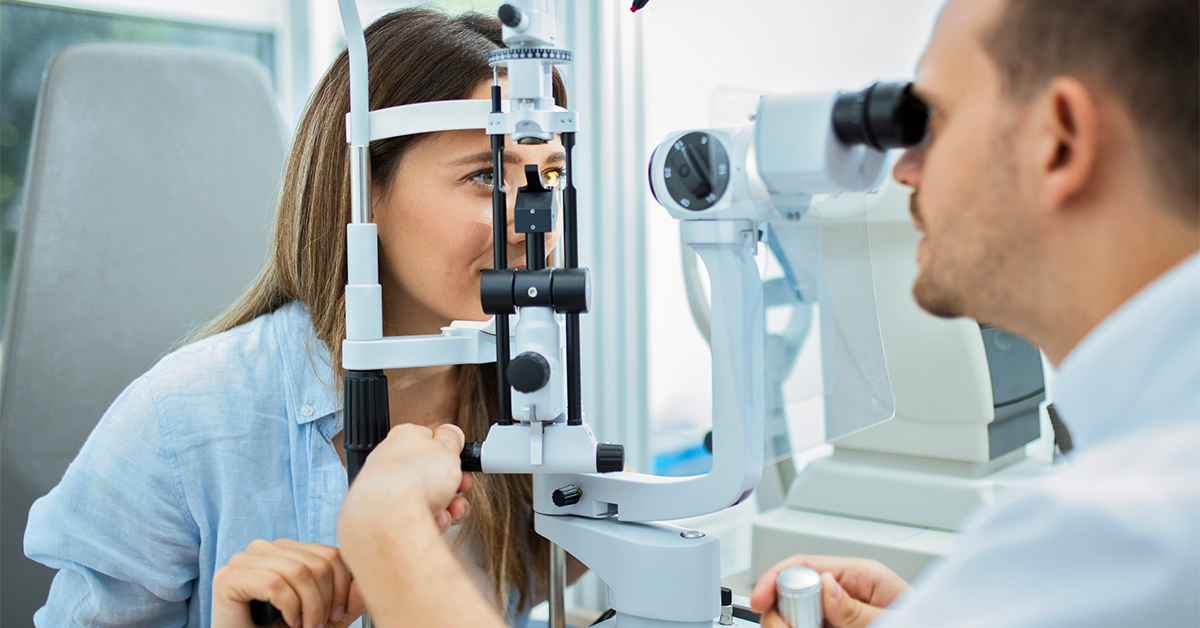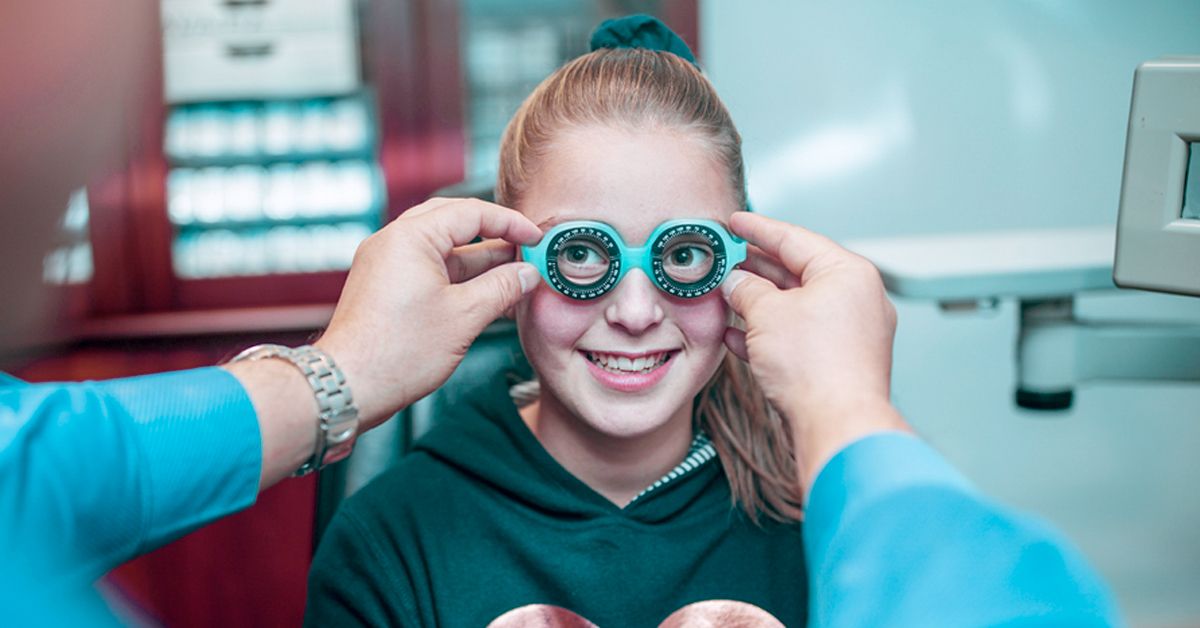Understanding the Duty of Your Eye Doctor in Keeping Vision
Understanding the Duty of Your Eye Doctor in Keeping Vision
Blog Article
Exploring the most recent Technical Advancements in Optometry and What They Mean for Eye Doctors
From the accuracy of Optical Comprehensibility Tomography to the nuanced understandings offered by AI-driven diagnostic tools, these innovations are establishing brand-new standards in patient analysis and therapy. As these advancements permeate the method, eye doctors are faced with the obstacle of embracing these devices to boost client end results.
Technologies in Diagnostic Tools
Progressing the field of optometry, technologies in analysis tools have reinvented the means eye treatment experts examine and detect visual impairments and ocular problems. The previous decade has observed considerable technological developments, making it possible for more detailed and precise examinations.
An additional secret innovation is the intro of advanced corneal topography systems, which map the surface area curvature of the cornea with accuracy. These tools are specifically valuable for fitting get in touch with lenses and identifying corneal disorders. In addition, electronic retinal imaging has actually transformed typical ophthalmoscopy, providing thorough, panoramic sights of the retina that facilitate thorough visual exams.
The development of wavefront aberrometry has likewise been critical, enabling the analysis of refractive errors with unrivaled precision (Eye Doctor). This technology helps in tailoring rehabilitative lenses and enhancing surgical outcomes for refractive surgeries. Jointly, these analysis innovations encourage optometrists to supply exceptional person care, making certain very early treatment and customized treatment strategies, ultimately boosting aesthetic health end results
AI in Patient Management
Building on the foundation of advanced diagnostic devices, the consolidation of man-made knowledge (AI) in client administration stands for a transformative jump for optometry. AI systems are progressively employed to enhance performance, accuracy, and personalization in patient care. By examining vast quantities of data, AI can identify patterns and predict potential ocular conditions, making it possible for eye doctors to customize treatments better. This capability is crucial in managing persistent eye conditions such as glaucoma and diabetic person retinopathy, where very early detection and continuous surveillance are essential.
Additionally, AI-driven platforms facilitate structured individual communications and administrative procedures. Automated scheduling, virtual appointments, and individualized follow-up strategies not just improve patient satisfaction yet also enhance time monitoring for specialists. These systems can triage people based on the necessity of their problems, guaranteeing that those in vital demand receive prompt interest.
Furthermore, AI boosts decision-making by giving optometrists with evidence-based referrals and treatment paths. By incorporating data from electronic health and wellness records, AI devices offer insights that notify scientific choices, decreasing the danger of errors and improving individual outcomes. As AI remains to evolve, its function in patient administration will likely expand, improving the landscape of optometric treatment.
Advancements in Retinal Imaging
In the realm of optometry, retinal imaging has experienced amazing technical improvements that are enhancing diagnostic abilities and client treatment. Developments such as Optical Comprehensibility Tomography (OCT) and fundus digital photography have changed just how eye doctors picture and evaluate the retina. OCT, in certain, provides high-resolution, cross-sectional photos of the retina, enabling the comprehensive assessment of its layers. This ability is very useful for very early detection and administration of conditions like glaucoma, diabetic person retinopathy, and age-related macular deterioration.
Boosted imaging modalities like OCT angiography are more refining analysis accuracy. This non-invasive method maps blood flow in the retina, offering important insights right into vascular health and wellness without the demand for color injections. In addition, adaptive optics modern technology is being incorporated into retinal imaging systems to remedy ocular aberrations, providing unprecedented photo clearness. Such innovations assist in the recognition of minute retinal changes that might signify illness progression.
In addition, advancements in fabricated intelligence are boosting retinal imaging by allowing automated evaluation of huge datasets. These systems assist optometrists in identifying visit their website patterns a measure of pathology, thus boosting diagnostic accuracy and effectiveness. Collectively, these innovations are transforming retinal imaging right into a cornerstone of contemporary eye care, boosting results and increasing healing possibilities.
Teleoptometry's Growing Duty
Teleoptometry is significantly becoming a crucial element of eye treatment, driven by innovations in electronic interaction and analysis devices. As optometry welcomes electronic transformation, teleoptometry helps with remote appointments, enabling optometrists to prolong their solutions beyond standard limits. This is specifically advantageous in rural and underserved locations where accessibility to specialized eye care is usually minimal. By leveraging high-resolution video clip conferencing and progressed retinal imaging, eye doctors can perform comprehensive eye examinations from afar, making certain prompt diagnosis and therapy.
The combination of expert system (AI) further boosts teleoptometry, making it possible for the analysis of visual information and helping in the detection of eye conditions such as glaucoma and diabetic person retinopathy. AI-powered algorithms can quickly analyze complicated imaging data, supplying optometrists with important insights that strengthen clinical decision-making.
Additionally, teleoptometry supports connection of treatment with smooth combination with electronic health records (EHRs), enabling eye doctors to maintain comprehensive person histories. When seeking advice from with different specialists., this ensures that clients receive customized and constant treatment even.
Regardless of these benefits, difficulties remain, including ensuring information safety and security and useful content taking care of client assumptions. Nonetheless, teleoptometry represents a considerable stride in the direction of even more available, effective, and patient-centered eye care. As technology develops, its duty is positioned to increase even more.

Future Fads in Eye Treatment
A myriad of innovative trends is readied to improve the future of eye treatment, driven by technical innovations and the evolving needs of clients. One considerable pattern is the integration of synthetic intelligence (AI) in diagnostics, which guarantees to improve the precision and efficiency of eye exams. AI formulas can analyze huge quantities of information from retinal photos, possibly finding problems like diabetic retinopathy and glaucoma earlier than traditional approaches.
Moreover, tailored medication is gaining traction in optometry, with genetic testing educating customized therapy plans. This method intends to optimize person outcomes by customizing treatments to specific genetic accounts. Wearable innovation, such as clever call lenses, is also imminent, supplying real-time monitoring of intraocular pressure or sugar degrees, therefore giving continual understandings right into ocular and systemic wellness.
The adoption of augmented fact (AR) and digital reality (VR) in training and person education is one more emerging fad. These modern technologies offer immersive experiences that can improve understanding and abilities both for patients and optometrists. As these trends develop, optometrists must stay abreast of technical developments to offer cutting-edge treatment, ensuring better person outcomes and satisfaction in the dynamic landscape of eye treatment.
Verdict

Collectively, these diagnostic developments encourage optometrists to provide premium patient treatment, guaranteeing early treatment and customized treatment methods, inevitably enhancing visual health end results.

As these technologies proceed to develop, optometrists have to adjust and incorporate them into technique, inevitably enhancing operations effectiveness and elevating the standard of eye care delivered to clients.
Report this page